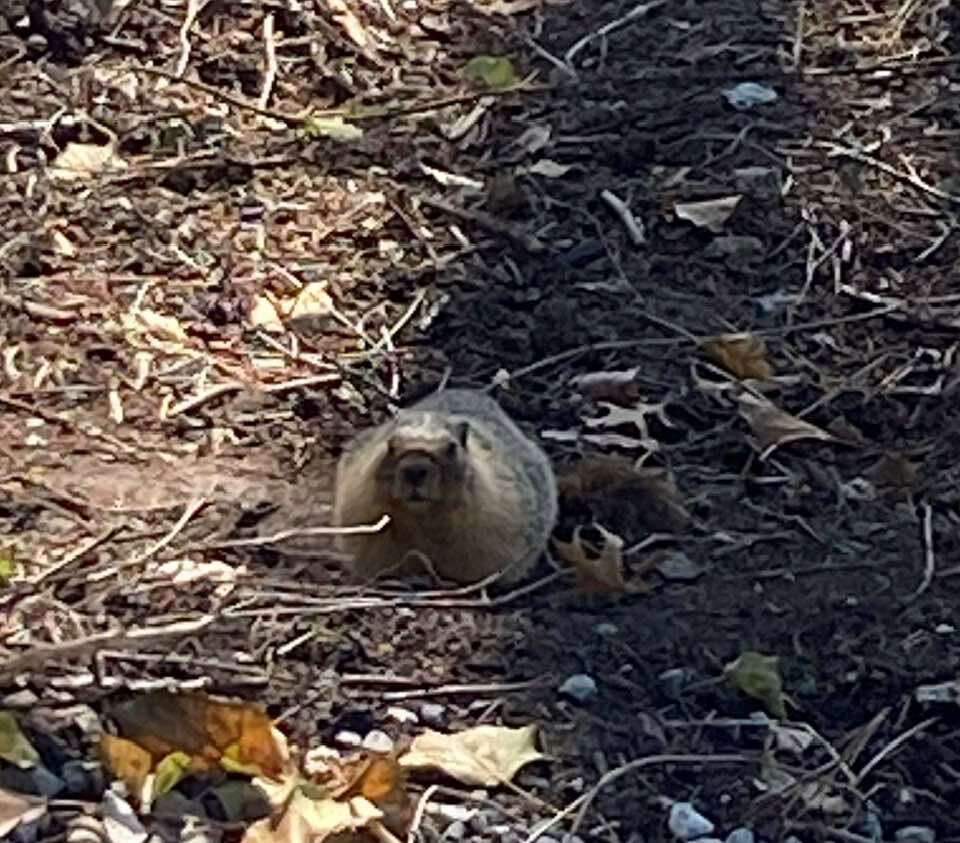He might not be from around these parts, but that hasnât stopped a certain rotund little fellow from making a home for himself in North Vancouver's Lower Lonsdale neighbourhood.
A marmot, affectionately dubbed âMortyâ by his new neighbours, has taken up residence in a small patch of brush near the corner of East First Street and St. Georges Avenue.
âI discovered him about two to three weeks ago, and every day I step outside heâs there,â said Leslie Robertson, a resident in the neighbouring apartment block.
âWeâve kind of bonded,â he said. âHeâs very, very chilled. Heâs very protective over his burrow, which is very cute, but other than that he is very easy going.â
Robertson said the friendly rodent is âvery comfortableâ with its human neighbours, rarely returning to its burrow even when people are present, but there are fears other species may be putting its safety in jeopardy.
Recent clearing of the brush in a nearby green space has left the burrow and surrounding land bare, and, with the area being a common spot for dogwalkers, Robertson is apprehensive of local hounds viewing Morty as a plaything or snack.
âIâm just a bit concerned for his safety. Heâs usually very, very calm, but his home has been uncovered, and now heâs exposed,â he said.
âHis life could come crashing down.â
WildsafeBCâs Gabriela De Romeri said Morty is likely a yellow-bellied marmot, a large species typically found in the southern part of the province and closer to the interior. It is âa little unusualâ for the rodents to find themselves this far west, but not completely unexpected, she said.
The marmot could have been born in the area and only recently emerged for spring, or the adventurous creature could have racked up the kilometres and travelled solo from the interior, she said.
While it is difficult to determine whether the marmot is a male or female, Morty (or Martha?) clearly looks very relaxed, happy, and healthy, De Romeri added.
"Out of all the marmots, yellow-bellied types are best adapted to living close to humans, and can handle noises and disturbances," she said. Dogs, however, are another matter.
âI am a little bit worried though about it burrowing in a park [frequented by dogs], especially if there are any hunting dogs in the area, they might see a moment and just snap right into it,â she said. âIt might be more ethical to have this creature moved. Perhaps the city will have to look into weighing the pros and cons as to whether disrupting this marmot and translocating him would be worth the traumatic stress, or whether he could get away with being safe in the park.â
According to the City of North Vancouver, it isnât unheard of to have marmots on the North Shore. In recent years one of the furry creatures was even discovered residing in the greenhouses at the cityâs operations centre in Mosquito Creek, said CNV spokesperson Amanda Gibbs.
Gibbs said the area where Morty lives is currently used as an informal meet up area for dog owners, but there are no concrete plans for any kind of development.
âIf there was to be a temporary or permanent change, an environmental assessment as part of the project would help identify any localized nests or burrows,â she said. âOur staff are asking the public to give it space, and we will follow up with any developments from our environment team.â
All marmots are protected under the BC Wildlife Act, yet while trapping and relocating yellow-bellied marmots without a permit is allowed, De Romeri warns it can be challenging to do so humanely and safely.
âThat decision shouldnât be taken lightly,â she said.
âIf you ever do see a marmot in real life give it space, make sure it has an escape route and, if it is taking up space on your residence and deciding to create a burrow and live there, then there are different strategies to deter an animal from staying around â like contacting a qualified pest management contractor,â she said.
Mina Kerr-Lazenby is the North Shore Newsâ Indigenous and civic affairs reporter. This reporting beat is made possible by the .



